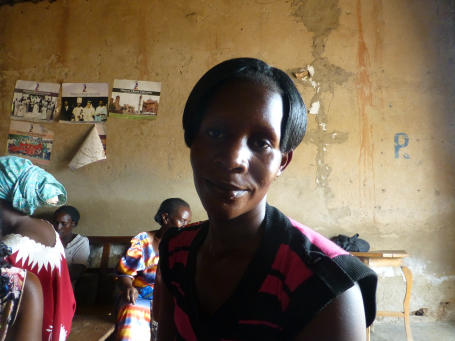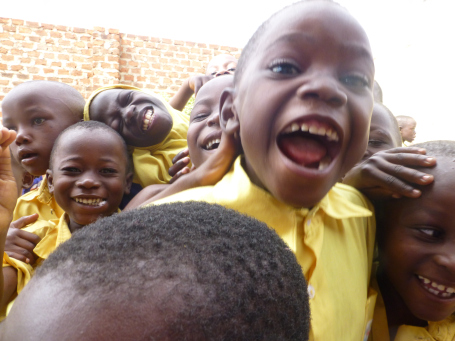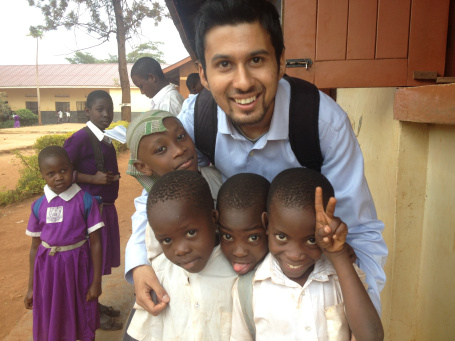

By: Abhishesh Adhikari
Most of the MCDT borrowers own small shops and restaurants in the poorest neighborhoods of Kampala. Many of them are single mothers, and don’t have any other source of income. MCDT is one of the very few organizations that can provide them with a source of capital, and it was evident from talking to these women how much they appreciated this access. In addition, MCDT also provides these women with business training courses, which is critically important during the early phases of any small business.
 MCDT group members assemble
MCDT group members assembleMCDT’s lending model is based on group and community relationships. To get a loan from MCDT, members need to start or join a solidarity group. The group normally consists of about 5 members, and each member contributes into a group savings fund. The group then collectively guarantees each of the member’s loans. If a member can’t make a certain repayment, the group members cover for her, partly by using the group’s savings fund. This model also discourages borrowers from defaulting on their loans. Since the group members are normally all from the same community, borrowers don’t want to sever the relationship with their community members by defaulting on a loan without a good reason. I came across a group where one member apparently decided to not pay back her loan and went into hiding in some other town because she didn’t want to face her group members.

Even though most of these borrowers operate on such a small scale, I was very impressed to see that most of them had long term growth strategies like any established company would have. One of the MCDT borrowers that I met was Rachel, who rents a small shop where she sells cough syrups and other medicines. She sends her 4 children to school using the profit generated from her small business. She has successfully used loans from MCDT to increase her revenue over the last 4 years. When I asked her about her plans for the next few years, she told me that she wanted to build her own shop instead of renting, since the relatively high rent was reducing her profit margin. She told me that she was also hoping to save enough money from her medicine shop to invest in a new used-clothes business, which she thinks has more growth potential in the future.
 Rachel: she runs a small medicine shop and wants to invest in a used-clothes business in the future
Rachel: she runs a small medicine shop and wants to invest in a used-clothes business in the future Chatting with the borrowers
Chatting with the borrowersBorrowers make repayments to MCDT every week, and they normally gather with their group members in local schools or churches to meet with MCDT loan officers. Even though the repayment frequency is so high, most borrowers seem to prefer it since they get to consult with their loan officers about any issues they might have with their businesses.
While visiting the local schools to meet the borrowers, I also got to meet a lot of kids who were very excited to see a Muzungu (foreigner.)
 Kids excited to see me and shouting “Muzungu!!”
Kids excited to see me and shouting “Muzungu!!” With students in a primary school
With students in a primary school It was really great to see the enthusiasm for starting and expanding new businesses and the desire for financial independence among the women of MCDT. What is even more encouraging is that this attitude seems pretty widespread all across Kampala. Most of the Ugandans I have come across over the last few weeks either have a small side-business, or plan to start one if given the capital. There are definitely a lot of opportunities here, and I am excited to see the inevitable growth in this region in the coming years.














